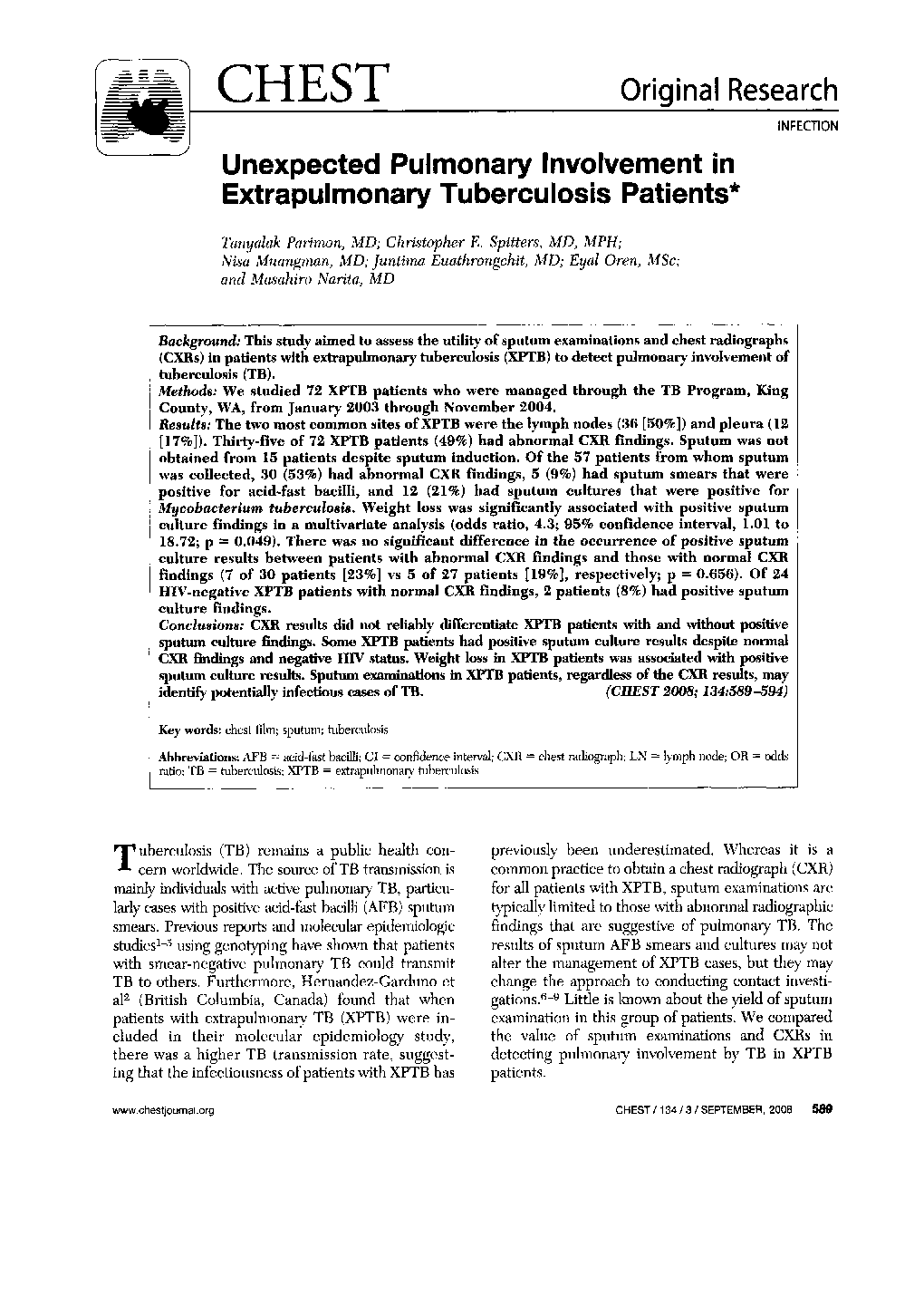| Article ID | Journal | Published Year | Pages | File Type |
|---|---|---|---|---|
| 2903968 | Chest | 2008 | 6 Pages |
BackgroundThis study aimed to assess the utility of sputum examinations and chest radiographs (CXRs) in patients with extrapulmonary tuberculosis (XPTB) to detect pulmonary involvement of tuberculosis (TB).MethodsWe studied 72 XPTB patients who were managed through the TB Program, King County, WA, from January 2003 through November 2004.ResultsThe two most common sites of XPTB were the lymph nodes (36 [50%]) and pleura (12 [17%]). Thirty-five of 72 XPTB patients (49%) had abnormal CXR findings. Sputum was not obtained from 15 patients despite sputum induction. Of the 57 patients from whom sputum was collected, 30 (53%) had abnormal CXR findings, 5 (9%) had sputum smears that were positive for acid-fast bacilli, and 12 (21%) had sputum cultures that were positive for Mycobacterium tuberculosis. Weight loss was significantly associated with positive sputum culture findings in a multivariate analysis (odds ratio, 4.3; 95% confidence interval, 1.01 to 18.72; p = 0.049). There was no significant difference in the occurrence of positive sputum culture results between patients with abnormal CXR findings and those with normal CXR findings (7 of 30 patients [23%] vs 5 of 27 patients [19%], respectively; p = 0.656). Of 24 HIV-negative XPTB patients with normal CXR findings, 2 patients (8%) had positive sputum culture findings.ConclusionsCXR results did not reliably differentiate XPTB patients with and without positive sputum culture findings. Some XPTB patients had positive sputum culture results despite normal CXR findings and negative HIV status. Weight loss in XPTB patients was associated with positive sputum culture results. Sputum examinations in XPTB patients, regardless of the CXR results, may identify potentially infectious cases of TB.
